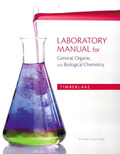
a.
To identify:
The given compound is an aldehyde or a ketone.
Introduction:
The carbonyl containing organic compounds are known as
b.
To identify:
The given compound is an aldehyde or a ketone.
Introduction:
The carbonyl containing organic compounds are known as aldehydes. In almonds and cherries, benzaldehyde is responsible for the aroma which is a type of aldehyde. The benzaldehyde is classified as aromatic aldehyde because it consists of a benzene ring. The ketone family of organic compounds is structurally similar to the aldehydes. One of the simplest ketone is acetone.
c.
To identify:
The given compound is an aldehyde or a ketone.
Introduction:
The carbonyl containing organic compounds are known as aldehydes. In almonds and cherries, benzaldehyde is responsible for the aroma which is a type of aldehyde. The benzaldehyde is classified as aromatic aldehyde because it consists of a benzene ring. The ketone family of organic compounds is structurally similar to the aldehydes. One of the simplest ketone is acetone.
Want to see the full answer?
Check out a sample textbook solution
Chapter 6 Solutions
EBK LABORATORY MANUAL FOR GENERAL, ORGA
- 18-18 Propanoic acid and methyl acetate are constitutional isomers, and both are liquids at room temperature. One of these compounds has a boiling point of 141°C; the other has a boiling point of 57°C. Which compound has which boiling point? Explain.arrow_forwardWhat's the difference between cyclohexanecarbaldehyde and cyclohexanecarboxaldehyde?arrow_forwardExplain why it is not possible to prepare a ketone that contains only two carbon atoms.arrow_forward
- How many possible positional isomers exist for the ketone hexanone? A) 4 B) 5 O C) 2 O D) 6arrow_forwardAcetominophen is a widely used and an effective pain reliever. Identify the functional group circle CH3 но alcohol O aldehyde O ketone ether carbonylarrow_forwardHydrolysis of an acetal in an acid solution would yield O a) an aldehyde, a ketone, and one alcohol b) an aldehyde, a ketone, and two alcohols c) an aldehyde or a ketone and one alcohol O d) an aldehyde or a ketone and two alcoholsarrow_forward
- How will you differentiate aldehydes from ketone? Write possible tests to identify each. What precipitate is formed?arrow_forwardFollowing are three alcohols with the molecular formula C4H10O. Their boiling points, from lowest to highest, are 82.3°C, 99.5°C, and 117°C. Which alcohol has which boiling point?arrow_forwardIdentify the functional groups presented and the type of bond in the following compounds.arrow_forward
- which of the following Compounds in which one or more carbon ring systems are present. thioacetaldehyde acetone methanethial thiobenzaldehyde diphenyl ketonearrow_forwardWhich of the following Compounds that contain carbonyl group thioacetaldehyde acetone methanethial thiobenzaldehyde diphenyl ketonearrow_forwardWhich of the following alcohols reacts with an oxidizing agent to produce a ketone? Methanol Ethanol T ertiary butyl alcohol 2-Butanolarrow_forward
 Chemistry for Today: General, Organic, and Bioche...ChemistryISBN:9781305960060Author:Spencer L. Seager, Michael R. Slabaugh, Maren S. HansenPublisher:Cengage Learning
Chemistry for Today: General, Organic, and Bioche...ChemistryISBN:9781305960060Author:Spencer L. Seager, Michael R. Slabaugh, Maren S. HansenPublisher:Cengage Learning Organic And Biological ChemistryChemistryISBN:9781305081079Author:STOKER, H. Stephen (howard Stephen)Publisher:Cengage Learning,
Organic And Biological ChemistryChemistryISBN:9781305081079Author:STOKER, H. Stephen (howard Stephen)Publisher:Cengage Learning, General, Organic, and Biological ChemistryChemistryISBN:9781285853918Author:H. Stephen StokerPublisher:Cengage Learning
General, Organic, and Biological ChemistryChemistryISBN:9781285853918Author:H. Stephen StokerPublisher:Cengage Learning Organic Chemistry: A Guided InquiryChemistryISBN:9780618974122Author:Andrei StraumanisPublisher:Cengage Learning
Organic Chemistry: A Guided InquiryChemistryISBN:9780618974122Author:Andrei StraumanisPublisher:Cengage Learning Chemistry: Principles and PracticeChemistryISBN:9780534420123Author:Daniel L. Reger, Scott R. Goode, David W. Ball, Edward MercerPublisher:Cengage Learning
Chemistry: Principles and PracticeChemistryISBN:9780534420123Author:Daniel L. Reger, Scott R. Goode, David W. Ball, Edward MercerPublisher:Cengage Learning Chemistry & Chemical ReactivityChemistryISBN:9781133949640Author:John C. Kotz, Paul M. Treichel, John Townsend, David TreichelPublisher:Cengage Learning
Chemistry & Chemical ReactivityChemistryISBN:9781133949640Author:John C. Kotz, Paul M. Treichel, John Townsend, David TreichelPublisher:Cengage Learning





